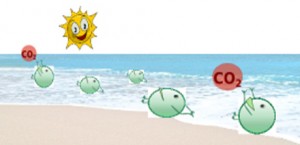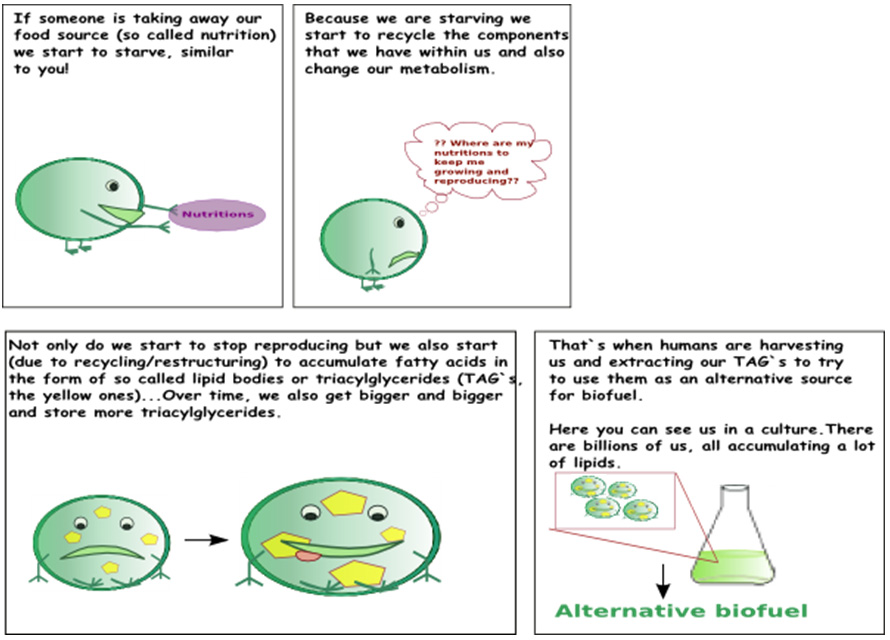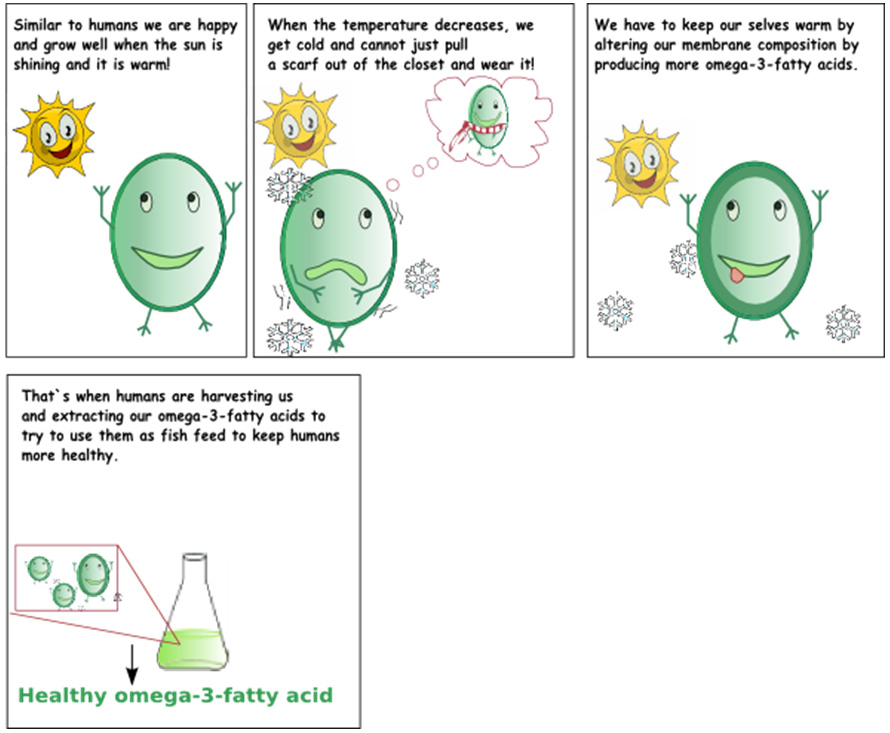 In my PhD project, I study the microalgae Nannochloropsis oceanica. My goal is to get a better understanding of how the genetic regulation of the lipid production in the microalgae is affected by different environmental conditions.
In my PhD project, I study the microalgae Nannochloropsis oceanica. My goal is to get a better understanding of how the genetic regulation of the lipid production in the microalgae is affected by different environmental conditions.
You cannot really see Nannochloropsis or other microalgae with the naked eye (they range in sizes from 2-100 µm). Therefore, I chose to illustrate the algae species I am working with as a cartoon represented by a little friend of mine; Nanno.
Have you ever seen a really green ocean? That greenish color you can see in the water is partly because of billions of algae that are growing there. You can see those algal communities on satellite pictures.
 What you should remember that is special about algae is that they can get energy for reproduction and growth from sunlight, using photosynthesis! While growing, algae capture carbon dioxide (CO2). In fact, algae is fixing more than 40% of the worlds carbon (CO2).
What you should remember that is special about algae is that they can get energy for reproduction and growth from sunlight, using photosynthesis! While growing, algae capture carbon dioxide (CO2). In fact, algae is fixing more than 40% of the worlds carbon (CO2).
Why are microalgae so interesting to humans?
Not only do they produce components that are industrially interesting, but also because algae can be used in a way no other plant/eukaryote can. They can be grown in bioreactors or ponds in the desert or other marginal land and they don’t need freshwater. Therefore algae don’t compete with agriculture and with human food sources such as crops does.
What components do humans get from algae and how?
For example, in the long run the idea is to use their lipids as an alternative source of bioenergy – see here
Some algae species can also be a source for the healthy omega-3-fatty acids, like those you can find in fish.
I hope you enjoyed the insight of the, for humans meaningful, life story of Nannochloropsis!


